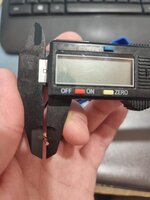Joe_Kleyn
Newbie
Hi all, I recently installed a 3700 kWp solar system with a 3500kWh inverter. I have some challenges with my efficiency and I was told that my current electrical wires might be too thin. Long story short, I bought some wires with a maximum rated capacity of 4600w and a thickness of 2.5mm2 described on the label. However, if a remove the insulation on the wire and I measure the actual copper thickness, it measures appr. 1.2mm thick. If I measure with the insulation, it is 2,5mm thick. My question is, how is home electrical wire thickness determined? With the insulation or without? It is maybe worth mentioning that I live in the Netherlands (Europe) TIA
Attachments
Last edited:

